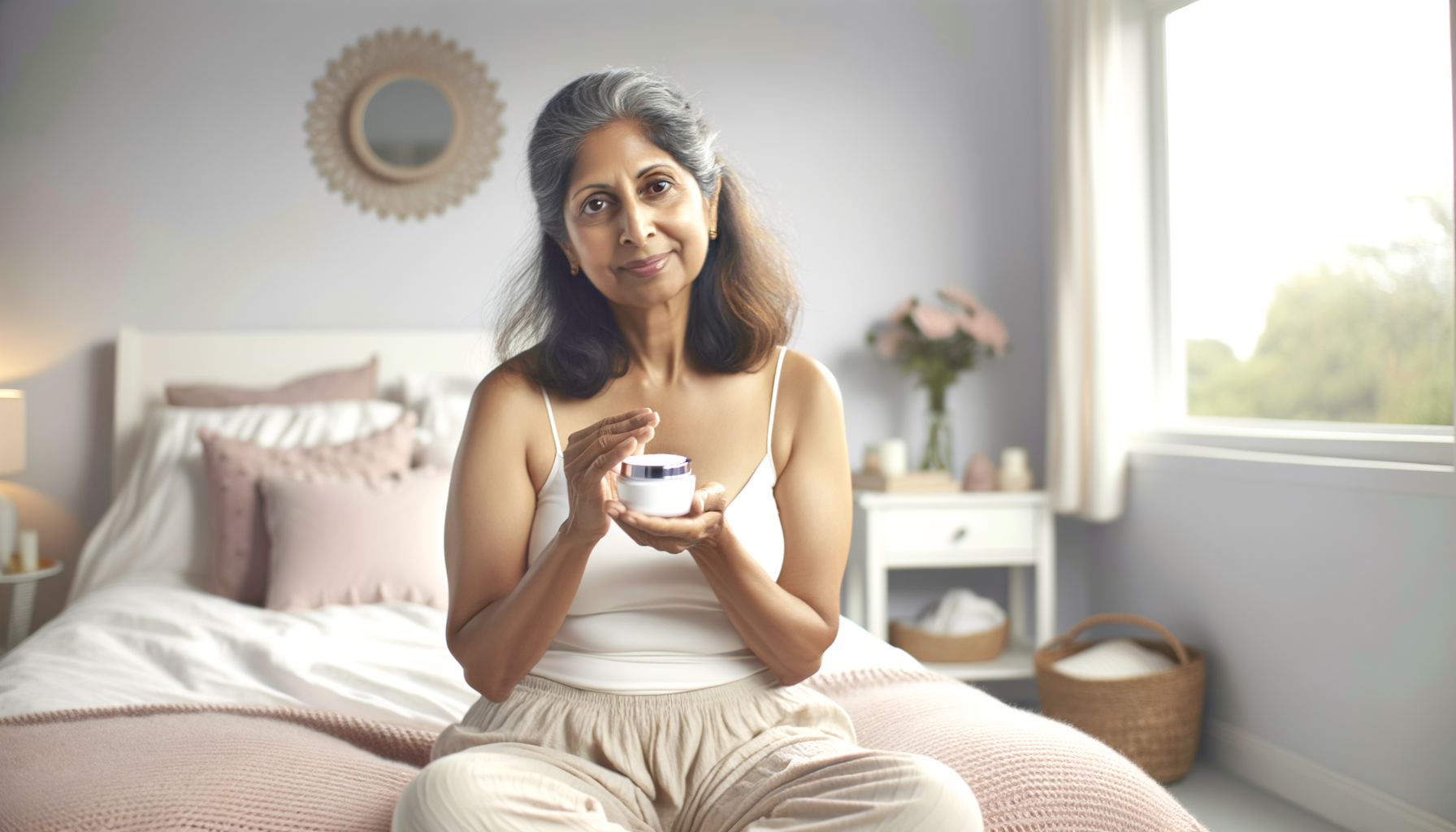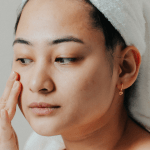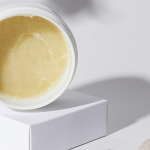
Introduction to Menopause and Vulvovaginal Health
Menopause marks a significant transition in a woman’s life, typically occurring in the late 40s or early 50s. It is defined as the cessation of menstruation for twelve consecutive months. This natural biological process is characterized by a decline in reproductive hormones, particularly estrogen, leading to the end of menstrual cycles. The period leading up to menopause, known as perimenopause, can last several years and is often accompanied by symptoms such as hot flashes, night sweats, and mood swings due to fluctuating hormone levels.
Impact of Estrogen on Vulva and Vagina
Estrogen plays a crucial role in maintaining the health and function of the vulva and vagina. It promotes blood flow, tissue elasticity, and lubrication, all of which contribute to comfortable sexual activity and overall vulvovaginal health. As estrogen levels decline during menopause, women may experience thinning of the vulvar and vaginal tissues, making them drier, less elastic, and more susceptible to irritation and injury.
Understanding Vulvovaginal Atrophy
Vulvovaginal atrophy (VVA) is a condition that commonly occurs during perimenopause and menopause due to decreased estrogen levels. The tissues of the vulva and the lining of the vagina become thinner, drier, and less flexible, leading to symptoms such as vaginal dryness, burning, and irritation. These changes can also result in reduced vaginal secretions and an increase in vaginal pH, making the vagina less acidic and more prone to infections.
Importance of Addressing Sexual Health
Sexual health is an integral part of a woman’s overall well-being, and the changes associated with menopause can significantly impact sexual function and satisfaction. Painful intercourse, decreased libido, and other sexual side effects of menopause can strain intimate relationships and affect quality of life. It is essential for women to recognize these changes and seek appropriate care. Open communication with healthcare providers about sexual health concerns can lead to effective management strategies, improving both physical comfort and emotional well-being.
Anatomical Changes During Menopause
Thinning Tissues and Decreased Elasticity
One of the hallmark changes during menopause is the thinning of vulvovaginal tissues. Estrogen, a hormone that maintains the thickness and elasticity of these tissues, declines during menopause, leading to a condition known as vulvovaginal atrophy. This results in the vulva and the lining of the vagina becoming thinner, drier, and less elastic. The rugal folds of the vagina, which allow for expansion during intercourse and childbirth, flatten out, making the vaginal wall smoother and less flexible. Consequently, this can lead to discomfort and an increased risk of injury during sexual activity.
Changes in Vaginal Secretions and pH Levels
Estrogen also influences vaginal secretions, which serve as a natural lubricant during sexual intercourse. As estrogen levels drop, these secretions diminish, leading to decreased lubrication and increased friction, which can cause pain during sex. Additionally, the vaginal pH becomes less acidic post-menopause, shifting from a protective acidic environment to a more basic one. This change in pH can disrupt the balance of vaginal flora, potentially increasing the risk of infections and altering the overall vaginal microbiome.
Comparative Anatomy: Pre- and Post-Menopause
Before menopause, the vagina is characterized by a thick wall with numerous rugal folds, providing both flexibility and strength. Estrogen-rich tissues are well-hydrated and elastic, allowing for comfortable sexual activity. In contrast, after menopause, the vaginal lining thins significantly, and the folds diminish, leading to a less flexible and more fragile state. This anatomical transformation can be visually observed, with the vulva and vagina taking on a paler and smoother appearance. The labia minora may also become less pronounced, sometimes receding entirely. These changes not only affect sexual function but can also contribute to urinary symptoms, such as increased frequency and urgency, as well as a heightened risk of urinary tract infections.
Sexual Side Effects and Intercourse Challenges
Pain and Discomfort During Intercourse
As women enter menopause, the decline in estrogen levels can lead to significant changes in their sexual health. One of the most common and distressing symptoms is pain and discomfort during intercourse, a condition known as dyspareunia. The vaginal tissues become thinner, drier, and less elastic, which can cause a feeling of dryness, tightness, and even severe pain during sexual activity. Postmenopausal women may experience soreness or a burning sensation after sex, which can be attributed to the inflammation caused by inadequate lubrication and the resulting friction. Regular sexual activity can help maintain vaginal health; however, the discomfort experienced during intercourse often leads to a reduction in frequency, exacerbating the problem.

From unhappy, dry, and sandpaper to silky, smooth and feeling good. That’s Cleo. Cleo is a 100% natural labial balm to moisture and soothe “your other lips”. Cleo is chemical-free, water-free, pH optimized and helps maintain and restore your delicate labial skin’s natural flora. Ideal for daily use or as needed. Get the most silky, lovable lips ever.
Susceptibility to Injury and Bleeding
The delicate state of vulvovaginal tissues post-menopause increases the risk of injury and bleeding during sexual activity. The lack of estrogen makes the vaginal lining more susceptible to tearing, which can lead to bleeding and further discomfort. This vulnerability is not only a physical issue but can also have psychological repercussions, as the fear of pain or injury may deter women from engaging in sexual activity. It is essential for women to be aware of these risks and to consider the use of appropriate lubricants or seek medical advice to prevent such injuries.
Psychological Impact and Avoidance of Sexual Activity
The psychological impact of these sexual side effects is profound. The anticipation or experience of pain during intercourse can lead to performance anxiety and arousal problems. Concerns about the recurrence of pain can diminish natural lubrication or cause involuntary tightening of the vaginal muscles, known as vaginismus, which is painful in itself. This creates a vicious cycle where the fear of pain leads to avoidance of sexual activity, which in turn can lead to further atrophy and discomfort. It is crucial for women to communicate with their partners and healthcare providers about these issues. Open discussion can lead to solutions that address both the physical and psychological aspects of postmenopausal sexual health.
Between 17% and 45% of postmenopausal women report experiencing painful sex, which significantly affects their quality of life and intimate relationships. It is important to recognize that while these changes are common, they are not inevitable, and various treatments and interventions can help manage these symptoms. Women should be encouraged to seek support and explore options that can help them maintain a fulfilling sex life during and after the menopause transition.
Non-Sexual Symptoms and Complications
Vaginal Dryness and Irritation Outside of Sexual Activity
Menopause can bring about a host of changes that affect a woman’s quality of life, many of which are not directly related to sexual activity. One of the most common non-sexual symptoms experienced during menopause is vaginal dryness. This condition is often a result of the decline in estrogen levels, which leads to the thinning and decreased lubrication of the vaginal tissues. Women may experience a feeling of dryness or itching that is persistent and not solely associated with intercourse. This can be uncomfortable and may lead to irritation or even pain during everyday activities.
Aside from discomfort, vaginal dryness can also contribute to an increased risk of vaginal infections due to the change in pH levels, making the environment less acidic and more prone to bacterial imbalance. To manage this symptom, women are encouraged to use nonprescription vaginal moisturizers regularly and to discuss with their healthcare provider the possibility of hormonal treatments that can alleviate these symptoms.
Atrophic Vaginitis and Inflammation
Another condition that may arise during menopause is atrophic vaginitis, which is inflammation of the vagina as a result of the thinning and shrinking of the tissues. This condition can lead to symptoms such as vaginal discharge, redness, and soreness, often accompanied by urinary symptoms like increased frequency or urgency. The loss of estrogen makes the vulvovaginal tissues more susceptible to infection and trauma, which can exacerbate these symptoms.
Atrophic vaginitis can be distressing, but it is treatable. Low doses of vaginal estrogen therapy have been shown to improve these symptoms by restoring the thickness and health of the vaginal lining. It is important for women to be aware that these symptoms are not an inevitable part of aging and that treatment options are available.
Vaginal Discharge and Redness
Changes in vaginal discharge and the appearance of redness in the vulvovaginal area are also common during menopause. These symptoms can be indicative of atrophic vaginitis or other vulvovaginal conditions. The discharge may change in consistency, color, and odor, and the vulva may appear redder than usual due to inflammation or thinning skin.
It is crucial for women to monitor these changes and seek medical advice if they notice any unusual symptoms. While these changes can be part of the natural menopausal transition, they can also signal infections or other health issues that may require medical intervention. A healthcare provider can help determine the cause of these symptoms and recommend appropriate treatments, which may include topical estrogens, vaginal moisturizers, or other therapies.
In conclusion, while menopause is often associated with sexual health changes, it is essential to recognize and address the non-sexual symptoms that can significantly impact a woman’s life. By understanding these changes and seeking appropriate care, women can maintain their vulvovaginal health and improve their overall well-being during and after the menopausal transition.
Preventive Measures and Maintenance of Vulvovaginal Health in Menopause
The Role of Regular Sexual Activity
Engaging in regular sexual activity can play a significant role in maintaining vulvovaginal health during menopause. Sexual intercourse promotes blood flow to the genital area, which can help keep vaginal tissues more supple and elastic. Additionally, the natural lubrication produced during sexual arousal can help counteract vaginal dryness, a common symptom of menopause. It is important to note that the use of water-based lubricants during intercourse can further alleviate discomfort and reduce the risk of injury to sensitive tissues.
Non-Hormonal Interventions
For women who prefer not to use hormonal treatments or for whom such treatments are contraindicated, non-hormonal interventions can be effective in managing vulvovaginal health. Over-the-counter vaginal moisturizers can provide long-lasting relief from dryness when applied regularly. Vaginal lubricants can also be used to reduce friction and discomfort during sexual activity. It is important to use only chemical-free moisturizers and lubes as chemicals are endocrine disruptors and generally not long-term safe. This is a strong point against water-based products as products containing water must use chemical preservatives. Water-free vaginal moisturizers and lubes can be made without chemicals. Additionally, pelvic floor exercises can strengthen the muscles supporting the vagina and urinary tract, potentially reducing symptoms of urinary incontinence and improving sexual function.
Lifestyle and Dietary Considerations
Lifestyle modifications can have a positive impact on menopause and vulvovaginal health. Maintaining a healthy weight, avoiding smoking, and limiting alcohol consumption can all contribute to better overall health and reduce menopausal symptoms. A balanced diet rich in phytoestrogens, found in foods like soybeans and flaxseeds, may offer some relief from menopausal symptoms due to their weak estrogen-like effects. Adequate hydration and the consumption of probiotic-rich foods can also support the health of the vaginal microbiome, potentially reducing the risk of infections and inflammation.
It is essential for women to be proactive about their vulvovaginal health during menopause. By incorporating regular sexual activity, exploring non-hormonal treatment options, and making informed lifestyle and dietary choices, women can effectively manage the changes associated with menopause and maintain their sexual well-being.
By the way, something for you, a little gift!!!
I am just in the middle of publishing my book. It’s about How women can balance their hormones. One part is about food and diet, of course.
Follow this link and enter your email.
I will send you this part of the book for free once the book is published. It has many concrete, practical tips and recipes and will help you feel better during menopause or times of Big hormonal fluctuations.
Annette, Damiva Lead for Health & Wellness

Treatment Options for Menopausal Vulvovaginal Symptoms
Vaginal Estrogen Therapy
For many women experiencing vulvovaginal atrophy (VVA) during menopause, vaginal estrogen therapy is a cornerstone of treatment. This therapy directly addresses the estrogen deficiency that is the root cause of VVA. Available in various forms, including creams, tablets, and rings, vaginal estrogen products work by replenishing local estrogen levels. They help in improving the thickness and elasticity of vaginal tissues, reducing pH levels, and alleviating symptoms such as dryness, itching, and pain during intercourse.
While systemic hormone replacement therapy (HRT) is an option for women with additional menopausal symptoms, local vaginal estrogen therapy is preferred for isolated vulvovaginal issues. It is important to note that the effects of local estrogen therapy are typically observed after 1-3 months of consistent use. Women should be informed about the potential for minimal systemic absorption and the low risk of side effects compared to systemic HRT.
Alternative Hormone Therapies
Beyond estrogen, other hormonal treatments like dehydroepiandrosterone (DHEA) have been explored for managing VVA. DHEA is a precursor to estrogen and androgens and has been shown to improve symptoms of VVA without significantly affecting systemic hormone levels. Another option is an oral selective estrogen receptor modulator (SERM) that acts similarly to estrogen on vaginal tissues, improving dryness and reducing dyspareunia.
Non-Hormonal Medications and Lubricants
For women who prefer not to use hormones or for whom hormones are contraindicated, non-hormonal options are available. Over-the-counter chemical-free (i.e. water-free) vaginal lubricants can be used during sexual activity to reduce friction and discomfort. Vaginal lubricants products come in water, silicone, or oil-based formulations. Water-free lubricants can have fewer side effects, especially when used more frequently.
Vaginal moisturizers are another non-hormonal intervention. They need to be chemical-free and designed for regular use to provide longer-lasting relief from vaginal dryness. The pH is critical and must match the vaginal pH value. They help maintain moisture and support the health of vaginal tissues. Some women may also find relief using natural oils, such as coconut or olive oil, as lubricants and moisturizers. However these individual oils are not a solution because individual oils don’t provide the right pH value. The pH value is crucial to prevent infections etc.
All-natural vaginal and labial moisturizers like Damiva’s are recommended by leading Pelvic Health Therapists and MDs.

If you wonder, if this discomfort and the dryness down there will be there forever….
Try Mae. Mae is gives you back comfort, control, re-assurance, and re-connecting.
Mae is more than just a vaginal moisturizer; it’s your ally for intimate natural health, rediscovering joy, cultivating comfort, and even igniting sparks of intimacy and rekindled romance. Mae is your companion in rejoicing in your femininity at every stage of life. Learn more…
In cases where vaginal atrophy contributes to urinary symptoms, laser treatments have emerged. Laser treatments are a non-invasive option to regenerate vaginal tissue, though long-term research and FDA approval are still pending. Additionally, vaginal dilators may be used to gently stretch the vaginal tissues, improving comfort during intercourse.
It is essential for women to discuss the full range of treatment options with their healthcare provider. This can help them to determine the most appropriate and effective approach for their individual needs. With the right treatment, women can manage the symptoms of menopausal vulvovaginal atrophy and maintain their quality of life.
Conclusion: Navigating Post Menopause and Vulvovaginal Health
The journey through menopause brings about a myriad of changes in a woman’s body, particularly in the vulva and vagina. Understanding the anatomical and physiological shifts that occur is crucial for maintaining sexual health and overall well-being. The decline in estrogen levels leads to conditions such as vulvovaginal atrophy, which can significantly impact the quality of life. Thinning tissues, decreased elasticity, and changes in vaginal secretions and pH levels contribute to discomfort and increased susceptibility to infections and injury. It is imperative that women and healthcare providers recognize the importance of awareness and proactive care in managing these changes to preserve vulvovaginal health and sexual function post-menopause.
Encouraging Open Discussion with Healthcare Providers
Open communication with healthcare providers is essential for effectively navigating menopause and vulvovaginal health. Women should feel empowered to discuss their symptoms and concerns, no matter how intimate or uncomfortable they may seem. Healthcare providers must create a supportive environment that encourages these discussions ensuring that women are informed about the changes they are experiencing and the treatment options available. By fostering a dialogue, women can receive personalized care that addresses both the physical and psychological aspects of vulvovaginal health during this stage of life.
Future Directions in Women’s Sexual Health Research
The landscape of women’s sexual health research is evolving, with a growing recognition of the need for more in-depth studies on post-menopausal vulvovaginal health. Future research should focus on developing a better understanding of the long-term effects of menopause on sexual function, the efficacy of various treatment modalities, and the interplay between hormonal changes and sexual well-being.
Additionally, there is a need for more comprehensive education and resources for both women and healthcare providers to ensure that the management of menopausal symptoms is grounded in evidence-based practices. As we advance our knowledge, we can improve the quality of life for women navigating the complex changes associated with menopause.








